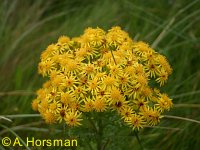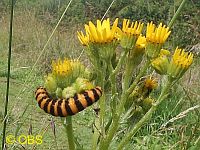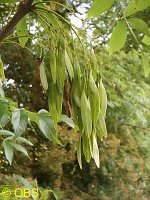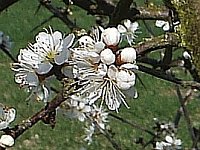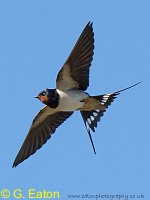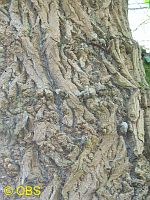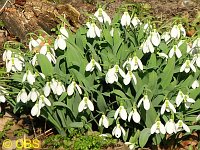Fields and River
A 2.5 mile (4 km) walk highlighting nature and wildlife of the Upper Test Valley
This is an extract from the leaflet. The printable leaflet is available to download from our online library.
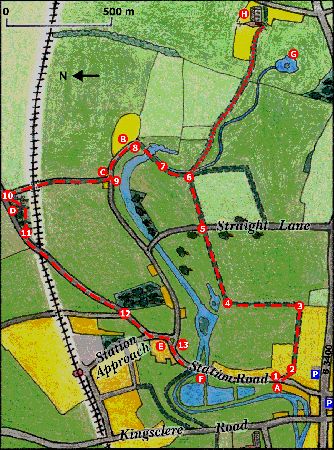
1. From The Surgery (A), Cross Station Road and follow the Public Footpath up Lambs Close to the right of the fire station. Turn right along the path that runs behind the houses. After 25 metres turn left through the gap in the fence.
2. Walk up the slope for about 300 metres following the public footpath signs. This part of the walk is through a new housing development.
3. At the top, turn left following the footpath sign and walk another 300 metres underneath a row of overhead lines. In the summer and autumn you may see ragwort (yellow daisy like plants). The cinnabar moth caterpillars feed exclusively on these plants. There are good views of the north part of Overton, including the church and the paper mill. The fields on either side of the path are planted with a variety of arable crops. You may see large flints, which are often found in areas with chalk bedrock.
4. At the end of the field, turn right along the field edge. The small trees and shrubs on the left are elder. Keep walking straight ahead and go across the field (even if the footpath is ploughed over) to a stile in the hedge. In the field boundary on the left there is an ancient oak tree. There are oak trees in the field and the large tree to the left of the stile is a beech.
5. Beware of traffic as you cross Straight Lane. Go into the field and continue along the same line as before.
6. You will reach an area of young trees. These include ash, blackthorn, silver birch, oak and beech. Continue down the slope and cross the stile in the fence, to reach a stream - the River Test. This may look like a dry shallow ditch or there may be water running in it. Cross the footbridge towards the water meadows.
These fields may flood in winter and spring. Traditionally, water meadows were used for hay to feed farm animals during the winter. The meadows often have a large variety of flowers and insects in the summer, when you may see swallows and house martins flying low over these fields.
Take time to pause and take in the natural environment ahead and all around, including the gnarled hawthorn trees on the left.
You may like to extend your walk to the source of the Test and Ashe Church (see further down). Otherwise cross back over the footbridge and stile.
7. Turn right and follow the fence line for about 50 metres. Turn right along the track. There are narrow footbridges to the left if the stream is running. (Depending on the season this track may dry or extremely full of water).
As you leave the wooded area, look out for the largest tree on the right hand side; this is a rare black poplar. The trunk is covered in ivy. You can see the deeply grooved bark on the main branches.
8. At the end of this track, turn left onto the road. You will see Polhampton House (B) on the right. This a late 17th century farmhouse. On the left there are 4 mature beech trees and lots of beech saplings.
9. After about 300 metres, pass Ogmore House (C) and take the right of way on the right before the next house. Follow this hedge-lined green lane and eventually pass under the railway.
10. As you reach the lane, go through the gate on the left into an area of young trees. This is known as David's Wood (D). Either continue straight on or take some time to wander through the wood and admire the view from one of the seats.
11. Leave by the gate at the other end (west) and emerge onto a lane.
Turn left and follow the lane. On the railway bridge look at the mosses and lichens on the stones and brickwork. Continue down the road. There are good views of farmland on the left.
12. Turn left at the 'T' junction, cross the road and continue down hill past Station Approach and Quidhampton Farm (E) on the right.
13. As you bear right, there is a grassy triangle with the large horse chestnut tree where you might like to pause at the seat. Continue along on Station Road on the footpath.
There are views up and down the River Test but do take great care on this stretch of road as it is used by large vehicles. Continue past Quidhampton Mill (F) back to the start point.
Extended walk to the source of the Test and Ashe Church (allow an extra ½ to ¾ hour)
From the footbridge walk through the water meadows heading slightly right towards the large house in the distance. There is a young mixed hedge with field maples behind.
Go through the kissing gate and follow the track straight ahead. The lake in the field to your right is the source of the River Test (G).
The Test flows southwest and then south through Whitchurch, Stockbridge and Romsey before reaching the sea in Southampton Water. It is famous for its trout fishing.
Turn right in front of the farm building and follow the road to Ashe Church (H).
Ashe Church is dedicated to the Holy Trinity and St Andrew and was rebuilt in 1888 on the site of a much older Norman church. It has flint walls and a wooden bell tower with a shingled spire. The church yard is a mass of snowdrops and crocuses in late winter/early spring.
Retrace your steps back along the track and through the gate into the meadow. Pause at the end of the young hedge and aim for the footbridge slightly left of the factory chimneys in the distance. Recross the footbridge and join the walk at 7.
Download the full leaflet from our online library, return to the Nature trails page or return to the top of this page.
